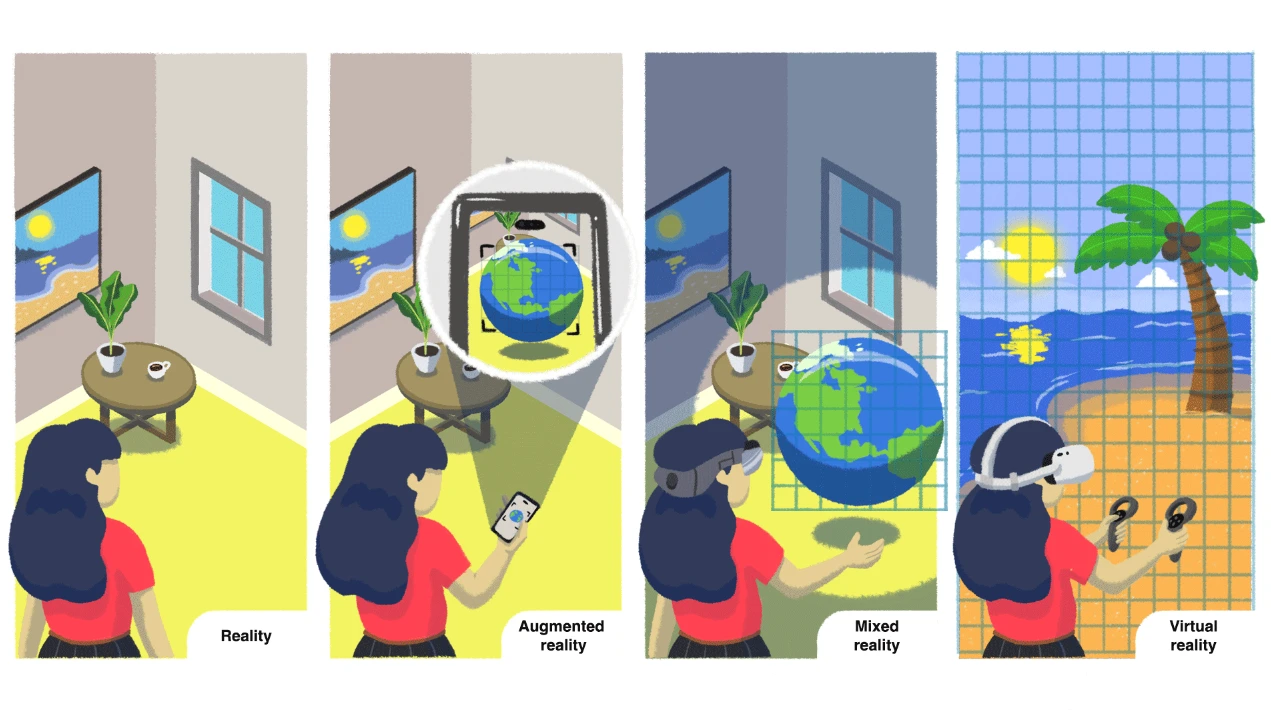
If you’re searching for the best technology to improve training in your business organization, you’re not alone. The introduction of augmented reality, virtual reality, and other tools in the workplace means safer and more cost-effective training options. Collectively, these technologies and others like them fall under the umbrella of extended reality—also known as XR. If you want to take advantage of a market expected to have a $345 billion value by 2030 according to Precedence Research, then you are going to be excited by what the world of XR for business has to offer.
In my role as senior vice president of XR products at The Learning Network, I’m working with our team to develop XR-based eLearning courses. We help decision-makers evaluate their training needs, examine innovative technologies, and then implement those tools for the best results.
But before you get to that point, it’s important to start with the fundamentals. What exactly is XR for business?
Understanding Extended Reality (XR) Technology
XR for business refers to the ecosystem of technologies designed to bring real and virtual worlds closer together. Businesses do this to provide training at scale in a safe environment.
There are four basic XR technologies:
- Augmented reality
- 360
- Mixed reality
- Virtual reality
Augmented Reality
Anyone with a smartphone can access augmented reality. Games such as Pokémon Go have popularized the act of looking at your screen and seeing an image superimposed on everyday surfaces—grass, pavement, countertops, and so on. Augmented reality is a great starting point for organizations because it’s accessible by most of their employees via mobile devices and is cost-effective.
An example of AR is 360, in which you can use a phone or a desktop to move the image on your screen in an arc, taking in your complete surroundings. For example, you might press buttons to learn how different components work on a machine whose image surrounds you.
Mixed Reality
Mixed reality refers to working in a virtual environment using a product such as the Microsoft HoloLens headset. In this environment, you can manipulate virtual objects with your hands. It’s still augmented reality in the sense that you have the ability to place virtual images over real-world ones.
Virtual Reality
Virtual reality places you in an entirely virtual environment using a headset such as HTC Vive or Meta Quest 2. This is a fully immersive experience without the ability to toggle back and forth between real-world images. This works best for organizations that have complex training needs, require outstanding virtual simulations, and have a bigger budget.
XR technology is changing rapidly, and this ecosystem is likely to evolve and expand. As a result, you should plan your XR investment for no more than a 3-year time horizon. Master these key components of XR for business, and you’ll be in great shape to decide which technology best fits your enterprise XR training needs.
Common Barriers and Misconceptions about XR for Business
In my experience, the two biggest barriers for adopting XR technology in the workplace are high costs and a lack of understanding of the technology itself. Let’s talk about why these don’t have to be barriers for your company.
First, XR for business doesn’t have to break your budget. AR technology begins at as little as $350 per employee. By partnering with a trusted XR organization, you can determine your training essentials, the tools you need, and your implementation timeline.
Second, it’s okay if XR seems confusing or overwhelming at first. You can quickly begin to appreciate the value of this technology with a free demo session. During a product demonstration, you can experience AR (including 360), MR, and VR. This helps you get started because you walk away from the demo with a clear understanding of what XR is and how it might work in your organization.
Organizations that adopt XR for business early can reap the many potential benefits. These include providing the safest and most relevant training to their teams, saving time while reducing training costs, and maintaining a competitive edge by retaining top talent.
XR Training Benefits
The use of XR training is particularly helpful for businesses that face common recurring needs, including:
- Training team members to navigate dangerous environments while keeping them safe (e.g., electrical technicians, nurses, mechanics, and firefighters).
- Providing high-quality and comprehensive training to every team member, a process that’s normally very resource intensive.
- Onboarding new team members effectively and quickly, while helping them retain valuable information they need in their day-to-day work.
- VR is a great example of XR technology that addresses each of these points. Nurses might use VR to learn to recognize a specific lung condition in patients in a virtual setting, giving them exposure to health needs difficult to replicate on demand in the real world.
- Mechanics might use VR to work on a virtual car so real-life fleets can get the proper attention they need—and get back on the road more quickly and safely.
Digital Twins Become the Norm in Business
XR technology accelerates a growing trend in business known as digital twins—the creation of identical real-world environments with virtual reality.
Using digital twins, your business can configure spaces team members are likely to encounter in their day-to-day work. This gives employees the opportunity to learn in environments, settings, and situations where they can learn safely through a more hands-on and transferable experience. They can then manipulate objects just as they would in real life.
Major airlines use XR for business to create these kinds of mirror environments to help pilots learn to go through their pre-flight checklist. Seeing all of the buttons, dials, and monitors you’d experience in real life provides a superior training environment—with full data captured on employees’ performance—compared to a paper checklist and a pencil.
Assessments and Learning Progression with XR
Your organization deserves the confidence of knowing its team members not only took the training but also grasped the material. XR facilitates this by incorporating hands-on engagement, assessment, and even self-guided learning journeys with multiple modules that each reinforce learning. You can track learner performance and provide evaluators with data to give employees feedback. Virtual reality platforms even allow for a third-party observer to watch, evaluate, and even coach what your team member is doing in the simulated environment.
The Bottom Line
XR for business represents a cost-effective, comprehensive, and safe way to improve your organization’s training. Many businesses start with a demo and introduce AR first, expanding their use of XR technology as comfort, needs, and budget expand. You will want to focus on exploring XR solutions that align with your organization’s specific needs and resources.
To learn more about technology for your enterprise XR training needs, contact us at The Learning Network.
Leave a comment
You must be logged in to post a comment.

